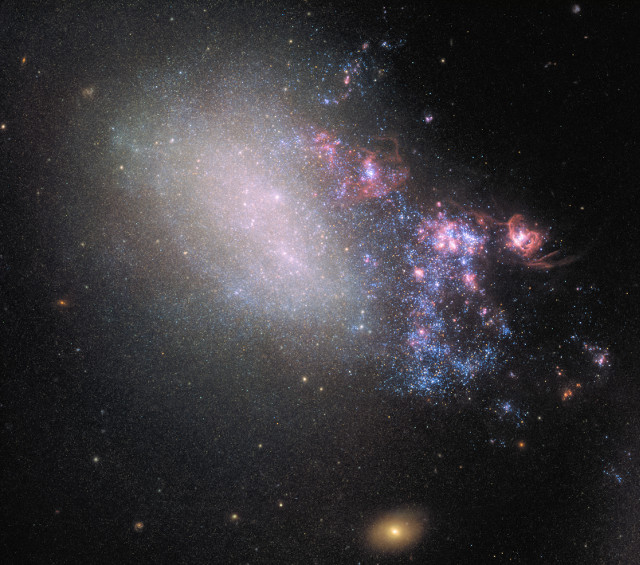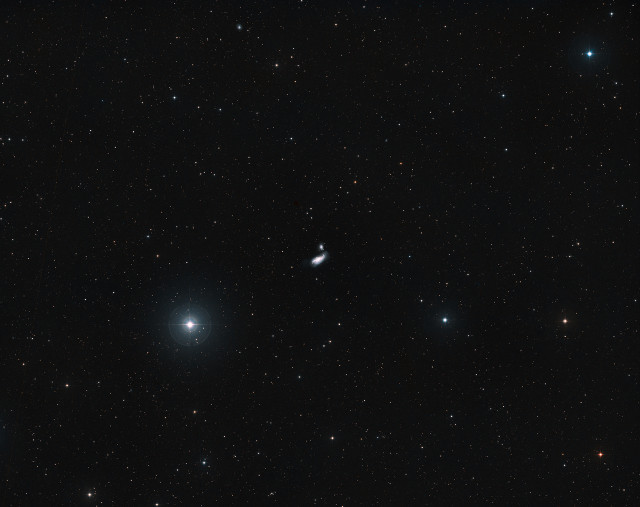
A new image captured by the Hubble Space Telescope’s Wide Field Camera 3 (WFC3) and Advanced Camera for Surveys (ACS) instruments portrays the galaxy NGC 4485. It’s an irregular galaxy, which means that its shape is not among the normal ones for galaxies, a consequence of its passage through a much larger neighbor, NGC 4490, which altered the balance inside it and among other things also started the formation of new stars.
Millions of years ago NGC 4485 was a spiral galaxy, a very common class, but the combination of gravitational forces between it and its neighbor NGC 4490 led them to a sort of clash even though they consisted mainly of empty space therefore stars actually bumping into each other are rare. However, the trajectories of the stars within NGC 4485 were altered making its shape irregular. The Atlas of the Peculiar Galaxies features the NGC 4490 and NGC 4485 pair as ARP 269, about 23 million light years away from Earth.
The two galaxies will probably merge but this process should still take many millions of years, meanwhile their distance is about 24,000 light years and the consequences of the interaction with its bigger neighbor can be seen on the small NGC 4485. Actually those two galaxies are no longer completely separate because the interaction generated a sort of bridge between them formed by flows of materials with large pockets of gaseous regions, some with a pinkish color where there are star nurseries.
In the galaxy NGC 4485 we can see two very different regions: the part visible on the left side of the top image (ESA/Hubble, NASA) still shows the traces of its original spiral structure while the part on the right side, where there’s the bridge that joins it to NGC 4490, shows a remarkable star formation activity and streams of dust and gas. That’s because the interaction with the neighbor caused a compression of interstellar gas clouds on that side, triggering the formation of massive stars, very hot blue giants. At the bottom there’s the galaxy CXOU J123033.6+414057, visible with a yellow-orange color, a much more distant X-ray source, about 850 million light years away from the Earth.
It’s not the first time that the NGC 4485 galaxy was studied using the Hubble Space Telescope: in 2014 an image captured using the Advanced Camera for Surveys (ACS) instrument participated in the Hidden Treasures competition. The experience suggested the addition of more filters of the WFC3 instrument to get more information from the colors to better understand the processes in place following the interaction with NGC 4490.
Several cases of interacting or merging galaxies are known, each at a different moment of their interaction. We’re seeing the ARP 269 pair while the two galaxies are separated, in other cases the borders between the two galaxies are not recognizable. Each case offers different information on events that will affect the Milky Way as well in a few billion years, when its merger with the Andromeda galaxy begins.


